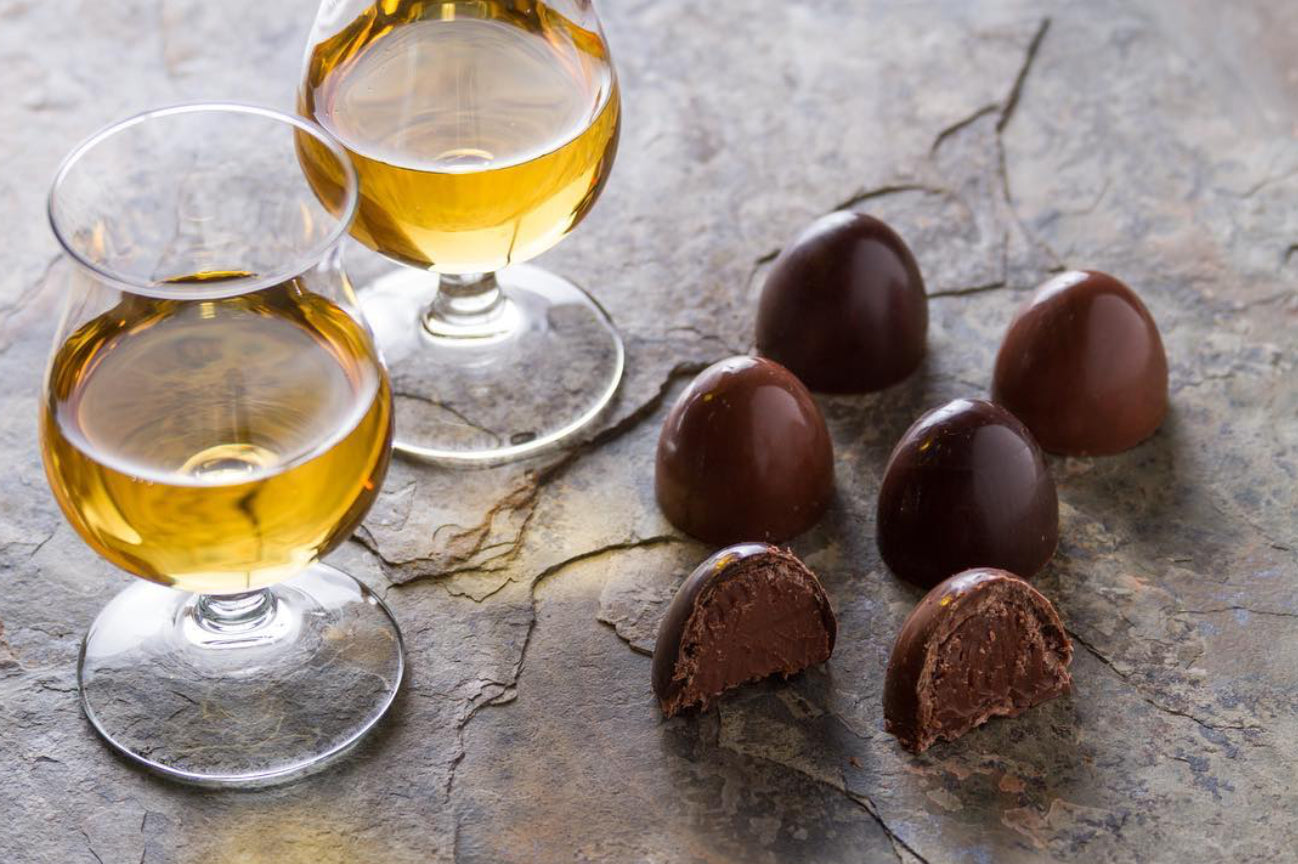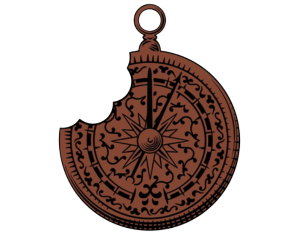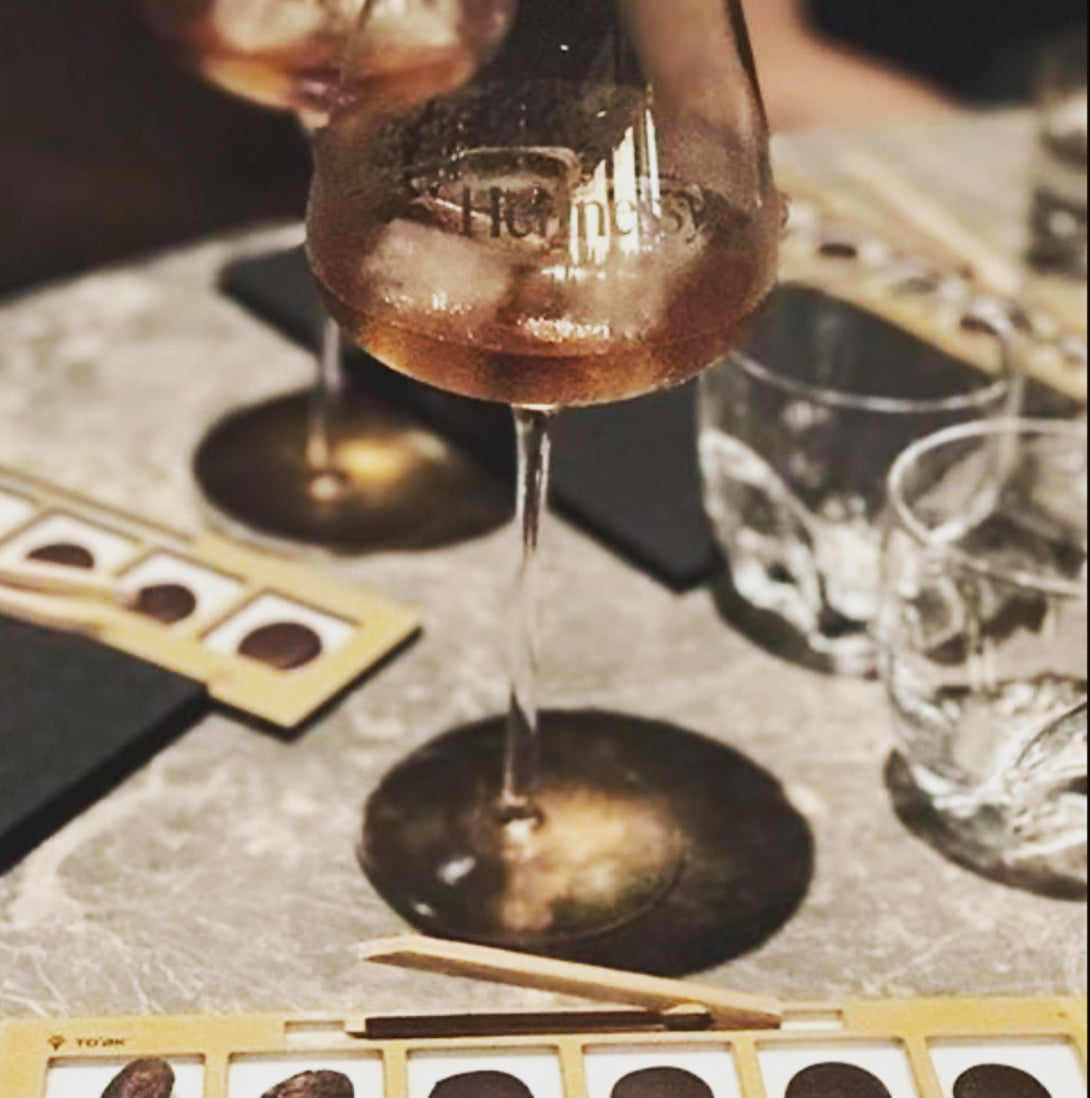Chocolate, Bourbon & Scotch

Hello, Class! Welcome to Spelling, Geography and Chemistry 101. Wait...what? You thought you enrolled in a course on pairing chocolate with whiskey??? Well, today’s spiritual lesson takes a multidisciplinary approach to bourbon and Scotch, so get ready to play with the alphabet, the map, your chemistry set, and, of course, chocolate.
Unlike most schools, we card students at the door, as instruction is served with a side of spirits and chocolate. Bourbon and Scotch are made from nutritious cereal grains, so the school dietician approved them as part of a balanced late day snack. She wears many hats and moonlights as our bartender. What can I say? This is a progressive institution.
To "e" or not to "e", that is the (whiskey/whisky) question!
The answer to this noble spelling question is dependent on origin. Embrace the “e” when referring to American and Irish spirits, including bourbon. Reject it when referring to Scotch whisky (native to Scotland), and the whiskies that hail from other parts of the world such as Australia, Japan, and most European countries.
Though they come from different parts of the globe, bourbon and Scotch share a few commonalities. Both of these distilled alcoholic beverages are required to be at least 40% alcohol by volume (ABV). They must be made from fermented (often malted), grain mash that matures in oak casks.
For a whiskey to qualify as bourbon, its grain mash must consist of at least 51% corn. The rest of the mash may be made of malted barley and either rye or wheat. Bourbon must be distilled at 160 proof (80% ABV) or less, and barrel aged at 125 proof or less. The barrel in which the distillate is aged must be brand new and made of American oak.
Scotch whisky’s main ingredient is malted barley that is combined with water and yeast. Other whole cereal grains are permissible in the distillate as coloring agents. Scotch must have an ABV of less than 94.8%, and is aged in used oak barrels, including those that once stored sherry, beer, and, you guessed it...bourbon. In order for a whisky to qualify as Scotch, it must be made in Scotland. Though similar to Scotch in many ways, Japanese whisky can never be called Scotch simply because it is made in Japan.
Scotch is required to be barrel aged for a minimum of three years. However, many of the most popular brands of Scotch are aged for 12 to 25 years. Bourbon, on the other hand, has no minimum aging requirement, but to receive the special distinction of “Straight Bourbon,” the distillate must remain in its oak cask for at least two years and be additive-free. The logical reason behind the shorter aging period for bourbon has everything to do with geography and climate. Kentucky, the site of most bourbon production, has hot summers during which whiskey in the cask evaporates at a faster rate. The longer the bourbon sits in its barrel, the less of it there is, and the more expensive it becomes.
Oak barrels have a major impact on the taste and textural complexity of bourbon and Scotch. The new barrels used for aging bourbon are toasted or charred, creating a warm, rich vanilla flavor that intensifies in the bourbon as the cask matures. Tannins develop as liquor and barrel integrate, providing pleasant astringency and backbone. Lactones impart woody, buttery, coconut notes. Hemicellulose in the oak breaks down into wood sugars and transfers caramel and toffee flavors to the bourbon.
Without American oak barrels, Scotch whisky might not even exist. Nine out of ten casks used to age Scotch once housed bourbon or Tennessee whisky. The law states that barrels may be used only once for the purpose of aging bourbon, but after the completion of that task, those same barrels may continue to stamp other luxury products, such as Scotch, or chocolate, with their characteristic depth of flavor
When Scotch occupies a previously used barrel, the oak extractives have already been mellowed by the spirit that it once held. The barrel may be emptied and filled a second time, at which point, oak notes become further subdued. As the woody sweetness of the oak recedes into the background, fruit notes that developed during fermentation come to the fore. Scotch can also have a smoky flavor, which results from burning peat in the barley malting process.
A well-balanced, single malt Scotch is typically a blend of the carefully chosen contents of multiple first and second-fill bourbon casks from the same distillery. It may seem counterintuitive, but a single malt Scotch is not a single whisky from a single barrel. That type of exclusive Scotch does exist, and it is called “single barrel” or “single cask.” It typically contains 50-60% ABV. Scottish single malt may contain a combination of dozens, or even hundreds, of malt whiskies from a single distillery that are “vatted” or blended together for consistency of taste. These are different from (and superior to) blended whiskies, which incorporate distillates from numerous distilleries and typically contain caramel color.
Similarly, a standard bottle of bourbon is a mixture of the contents of different distilleries’ barrels which contain the same grain mash profile. The blend is watered down to achieve the desired proof. A single barrel bourbon is considered of higher quality than a blend, and contains the contents of one barrel, watered down to the desired proof. Rarer, still, is a single barrel, barrel proof bourbon (60-65% ABV), which comes straight from one specific cask and remains uncut.
It’s not just liquor that ages inside barrels. Many chocolate lovers are surprised to learn that craft makers sometimes age cacao nibs, or even whole bars, for months or years within bourbon casks. Inside the cask, chocolate interacts with space and time, culminating in a layered, edible record of chemical processes. The cocoa butter, or fat in the chocolate, acts as a sponge, absorbing the barrel’s spirited essence. The resulting craft bar is suffused with subtle, refined flavors. Rather than an overpowering burst of whiskey, plush notes of vanilla, nougat and oak are embedded in bourbon barrel aged chocolates. Such delicacy would be difficult to achieve by simply infusing chocolate bars with bourbon during production.
At this point, I think it’s high time we stepped into the lab for some hands-on experimentation with chocolate and whiskey!
I’ve chosen several top winners from the 2020 San Francisco World Spirits Competition to pair with beauties from the Barometer Chocolate collection...
Scotch:
Try Glen Dronach Revival 15 Year-Old Single Malt Scotch (Best in Show Whiskey) with Fruition’s jammy Wild Bolivia 74% or fudgy and lightly fruity Los Bejucos 77% Dark Chocolate Bar. Other delightful options are the fudgy Friis Holm Chuno 70%, or the To'ak Galapagos Harvest 2018 75%. The sherry cask-aged Scotch has notes of rich, dark chocolate, black cherry, honey-glazed apricot, ripe fig, muscovado sugar and a hint of tobacco.
Pair Bunnahabhain 12 Year-Old Single Malt Scotch, boasting notes of sweet fruit, nuts, vanilla and caramel with these divine bars: Fruition’s Peru Marañon 68% Dark Milk Chocolate bar and Rózsavölgyi Csokoládé’s 71% Dark Chocolate Bar. Their gentle tannins and notes of chocolate cake, choux pastry, hints of candied orange and cream sherry perfectly complement this Scotch.
If you are interested in sampling a splurge Scotch, try the Aultmore 21 Year-Old Single Malt. It’s a connoisseur’s dream with tropical fruit notes of banana and papaya, along with maltier tones like oat cake. The lingering finish is warm and spicy. Pair it with these bars from Pump Street: Chocolate Oat Milk and/or Rye Crumb, Milk & Sea Salt (both 60%), or these more intense Bachelors Hall Jamaica Dark Chocolate bars from Pump Street (75%) and Soma (70%). The Qantu Chuncho 70% Dark Chocolate Bar would be lovely here, too.
Bourbon:
I highly recommend that you pair any of these selections with Fruition’s Hudson Bourbon 61% Dark Milk Chocolate Bar and their Brown Butter Bourbon Caramels. The To'ak Galapagos Harvest 2018 75% Dark Chocolate Bar would also be a winner with Scotch.
Buffalo Trace Kentucky Straight Bourbon is smooth with sugar, spice, toffee, oak and vanilla notes. Taste some alongside the Qantu Chuncho 70% Dark Chocolate Bar and the Fruition Dominican Los Bejucos 77% (both coming very soon to the Barometer Chocolate collection).
Eagle Rare 17 Year-Old Kentucky Straight Bourbon is bold, dry and oaky with notes of candied almond and rich cocoa. Sip it with these bars from Dick Taylor: Candied Almond 73% or Vanilla Milk Chocolate 55%.
Kings County Distillery is located in my hometown of Brooklyn, NY. This exclusive distillery is New York City’s oldest and largest. Currently, you can visit them in their Tasting Room Garden in the Brooklyn Navy Yard, or sign up for one of their virtual tastings. Try their Straight Bourbon, with notes of crisp Demerara sugar, caramel, and citrus-tinged vanilla, alongside these vibrant 70% dark chocolate bars from Qantu: Gran Blanco or Chuncho. The Fruition Dominican Los Bejucos 77% would be a satisfying choice as well.
Serve the whiskey neat. Serving it on ice will dull the flavor of both the spirit and the chocolate, and ice numbs the palate, so even water with ice as a beverage is not recommended for intentional chocolate appreciation.
How to Savor Chocolate with Whiskey/Whisky:
Taste the chocolate by itself. Notice the aroma and flavor notes.
Cleanse your palate with a plain cracker, piece of crusty bread, or a thin wedge of tart green apple.
Now taste the whiskey by itself, paying attention to its aroma, texture and flavor.
Take another taste of the chocolate, biting into it and then allowing it to melt slightly in your mouth. This can take anywhere from 5-10 seconds.
Take a sip of the whiskey as the chocolate continues its melting process. Notice the commingled flavors and sensations in your mouth and body as you unite these two distinct tastes.
Swallow the whiskey while the melting process of the chocolate is still underway, and marvel at the unique flavor arc that blossoms and unfolds in your mouth. Enjoy the full effect as the chocolate completely melts.
You know, in some schools, snack time revolves around animal crackers and juice boxes. I’d find it challenging to build an entire lesson around that ridiculous pairing, but try, if you like. Perhaps you’d find that the crispness of apple juice brings out the mischievous notes in the monkey cookie, while the buoyancy of Very Berry provides a satisfying counterpoint to the massive mouthfeel of the elephant. Or, you might just discover that animal crackers and juice taste like total crap together and long for this Chocolate Schoolhouse’s more elevated snacks.
Students, there’s no homework here...only homeplay. Mix and match what appeals to you without overthinking it, and most of all, have FUN! Chocolate is a journey. You are an explorer. Sometimes there are nibs in the road, but if you follow your heart and your senses, I promise you will encounter smooth savoring ahead, as well as many tasty treasures. Remember that ultimately you hold the (whis)key to your success.
0 comments



